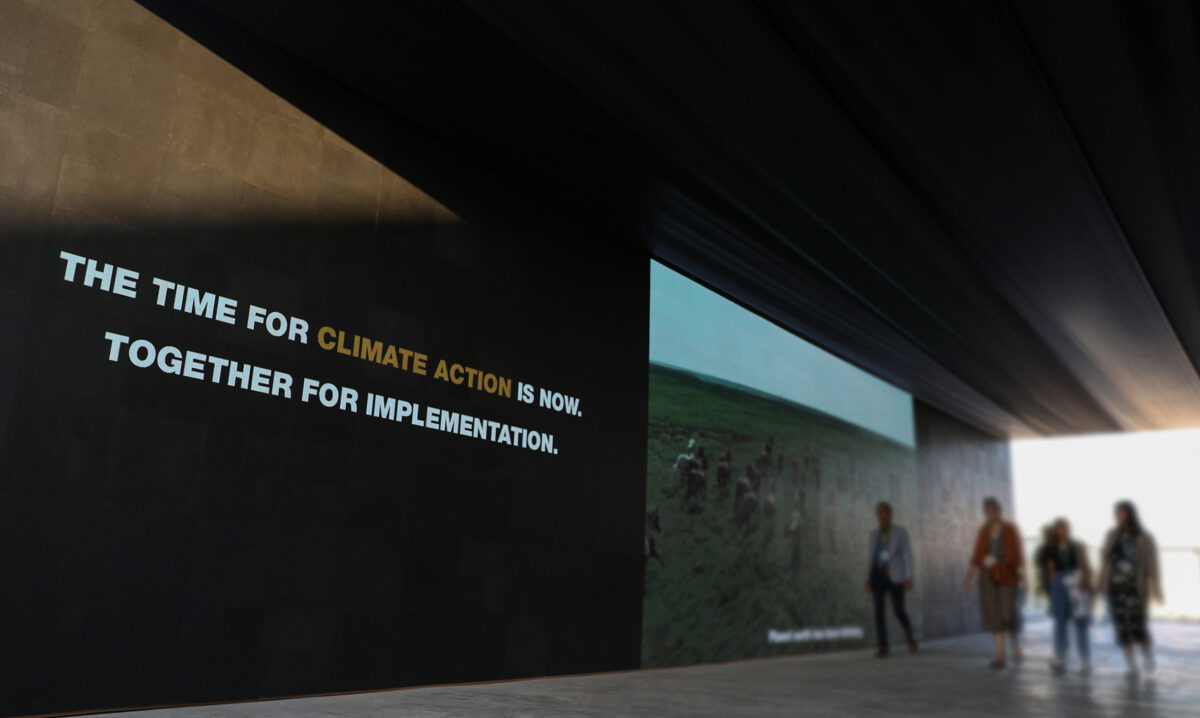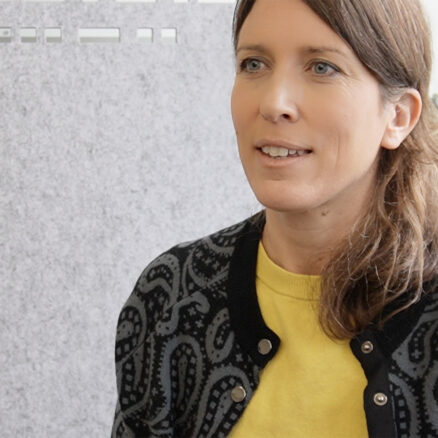The run up to every COP is a time for reflection and taking inventory of what’s been achieved over the preceding 12 months, as the planet’s clock continues to tick. This year’s edition kicked off amidst fears of slow progress on pledges from Glasgow and a rapid rebound of emissions post-COVID, with figures released in June showing an annual rise of over six percent as well as a new record high.
This backdrop fostered an even greater sense of urgency as proceedings began in Sharm El Sheikh. As Simon Steill, executive secretary for the UN Framework Convention on Climate Change (UNFCCC), said in his opening address, “COP21 in Paris told us what needed to be done, COP26 in Glasgow told us how to do it, and COP27 in Sharm El Sheikh is about moving from words to action.”The final agreement at COP27 fell short of expectations. It lacks a commitment to broaden the pledge to phase out unabated coal emissions to cover all fossil fuels and contains no call for emissions to peak by 2025, as required to fulfill the Paris Agreement. Now, more than ever, the private sector will need to lead the charge and push for the outcomes the planet needs.
Nevertheless, a number of noteworthy events unfolded at COP27 — enough to give business some momentum to build on in the race against time.
Here’s what was different at COP27
+ Notable firsts. The Global South, and those countries that are disproportionately impacted by climate change, were given a platform for the first time. COP27 witnessed a push for reparations and financial investment to alleviate the damage caused by the climate crisis triggered by the Global North.
This concept of Loss and Damage gained traction over the two weeks, with a landmark funding commitment ultimately landing in the final agreement, due to the tireless efforts from those on the frontlines of the crisis.
+ Adaptation and resilience finally front and center. In response to extreme climatic events such as the floods that devastated so much of Pakistan this year, COP27 saw the launch of the Sharm-El-Sheikh Adaptation Agenda. Designed to rally global support around 30 actions needed to achieve a resilient world by 2030, it included targets such as transitioning to more sustainable ways of farming, which can both increase yields and reduce emissions. Still, a target for adaptation remains to be set and less than 15% of the required financing has been reached.
+ For some, 1.5°C is very much alive. While doubts about the viability of the 1.5°C goal multiplied, for the business community, it wasn’t up for discussion. The companies at COP spoke loudly about the need for governments to make progress on regulations and standards to facilitate the global transition of the private sector. There was also news that the number of companies setting science-based targets has doubled since COP26, with over 1,800 companies having validated targets and 4,000 having committed to setting them.
+ Brazil is back and with it, forests. The country’s resurgent president Luiz Inácio Lula da Silva set the bar high when he talked of Brazilian agri-business as a “strategic ally” in his push for more regenerative and sustainable agriculture, while also announcing plans to reverse deforestation in the Amazon and work more closely with the Congo and Indonesia to protect the worlds’ largest tropical forest.
COP27 themes to help businesses navigate their sustainable transformation
+ Challenging carbon “tunnel vision”. While the focus at COP was still very much on decarbonization and the need to accelerate it, there was also a growing recognition that tackling the climate emergency is about more than just cutting emissions. While no link to biodiversity included in the final COP27 agreement was formalized, for the first time, the term “nature-based solutions” made it into the final COP text, with leaders finally acknowledging that protecting biodiversity is protecting the Paris Agreement.
Biodiversity is now unequivocally a business issue, and the evidence is compelling: 50% of global GDP depends directly on the services provided by nature. More and more companies are realizing that the twin crises of climate change and biodiversity loss deserve can’t be treated in silos. Nature can’t be viewed as a secondary, less-important challenge to climate; action in one area impacts the other.
Take the launch of Mangrove Breakthrough, an initiative to unlock the finance needed to restore and protect these vital coastal forests. By doing so not only is biodiversity preserved, but sources of food are protected, the land gains a buffer against coastal erosion and the role of the mangrove as a phenomenal carbon sink is secured.
+ Drawing a red line under false claims of progress. COP27 also saw a crackdown on corporate greenwashing. A new set of recommendations from the UN’s High Level Expert Groupaims to build on the Race to Zero and Science Based Targets initiative by providing corporates and investors with time-based frameworks to deliver net zero, based on short, medium and long-term targets. With this release, companies can expect increased scrutiny from the climate community, with expectations on tracking and reporting progress.
Its overarching message is for businesses to move away from voluntary initiatives to disclosure that is regulated through requirements to reach public net zero targets. But there are also some other important considerations. For one, companies should no longer claim to be net zero if they are still involved in building or investing in new fossil fuel supply, or support deforestation and other environmentally destructive activities. Firms should also focus on cutting emissions first before purchasing carbon credits, which should only be used as a last resort, to offset hard to abate emissions.
The recommendations are also clear that they cannot outwardly commit to net zero yet continue to associate with groups such as trade associations that lobby behind the scenes to undermine climate policies.
+ Working together to drive greater transparency. Greater transparency and accountability were other resonant themes at COP, as was the call for coordinated responses to address environmental challenges — since no single player can reach the Paris Agreement on its own. It turns out collaboration may be the very ingredient needed to drive greater transparency.
While not under the spotlight at COP, the cosmetics industry has created several blueprints that may serve as examples for other industries in tackling transparency and accountability. The EcoBeautyScore consortium is one that checks both boxes. The 50+ member initiative is creating an industry-wide environmental impact assessment and scoring system for cosmetics products that provides clear, transparent and comparable environmental impact information. The Sustainable Packaging Initiative for Cosmetics (SPICE) is another.
+ A new, holistic approach for fashion. The apparel industry has a huge role to play in the overall climate agenda and COP saw the non-profit Global Fashion Agenda (GFA) address some of these critical issues.
Events included the launch of the Fashion Industry Target Consultation to identify and align the industry around a set of holistic sustainability targets, covering not only the 1.5°Cpathway but also routes to reduce virgin materials use, establish living wages and dignified work for all and protect nature. The GFA, which has strong links with the UN, emphasized that these areas need to be brought into the climate change conversation as part of a holistic approach towards a net positive industry for people and the planet.
In other news, the UNFCCC Fashion Industry Charter for Climate Action and the Sustainable Apparel Coalition issued a call for feedback on new guidance for measuring Scope 3 emissions in a bid to bring greater consistency to the sector.
+ A breakthrough moment for food. For the first time in the history of climate talks, a full day was dedicated to farming and food. It gave greater prominence than ever before to the conundrum of how to cut the sector’s emissions — with more countries signing onto a global pact to reduce methane emissions, while also maintaining a secure supply of food and feeding the world’s ever-growing population.
According to the Global Alliance for the Future of Food, food systems account for about a third of emissions, yet only three percent of climate finance is channeled into them.In related news, Egyptian leadership and the Food and Agriculture Organization (FAO) launched the Food and Agriculture for Sustainable Transformation initiative (FAST), to increase and improve climate finance contributions to transform food systems by 2030. While the spotlight on food systems was a welcomed first, translating commitments into action remained less concrete, especially at the corporate level.
Business must continue to show up
While many may be disappointed with the final outcome from the COP, there was still progress, albeit slow. Regardless of the frustrations, the private sector must persevere in the push for a global response to the environmental crisis.
By showing up to events like COP in numbers, businesses have the opportunity to show governments they’re on board and push for a bold environmental agenda — especially at a time when the governments risk falling short.
It’s crunch time for the planet. As the IPCC said earlier this year, mere months remain to have a chance of staying under 1.5°C.
As eyes already start to turn to the COP15 biodiversity summit next month and COP28 in the United Arab Emirates next year, the business voice calling to keep commitments alive and strengthen them must become so loud that it’s impossible to ignore.





